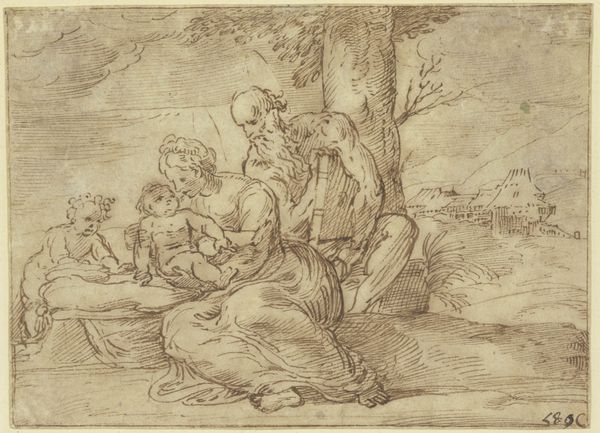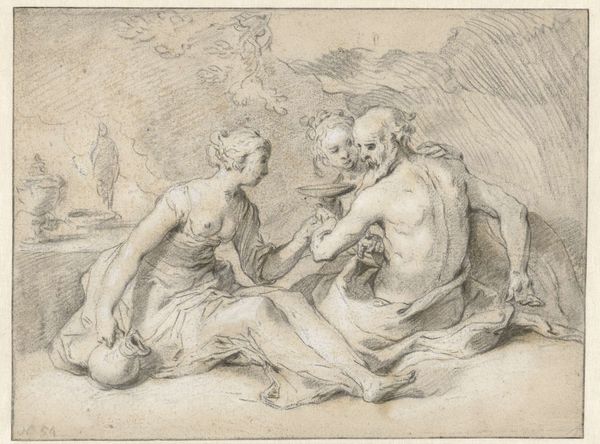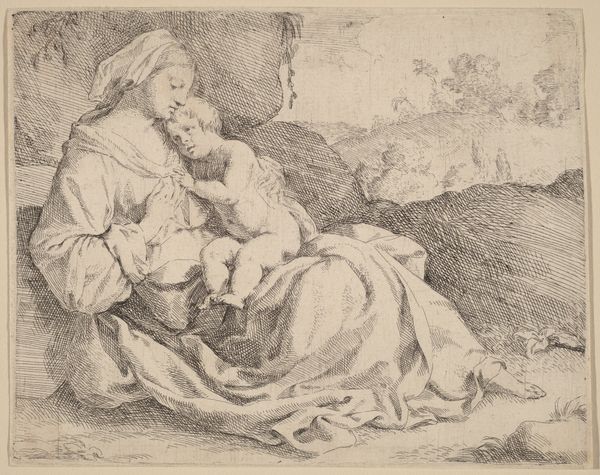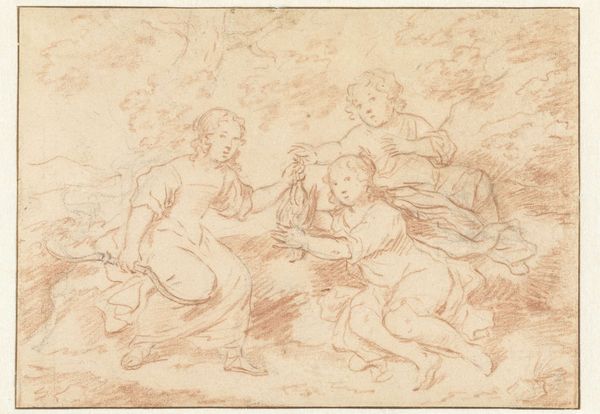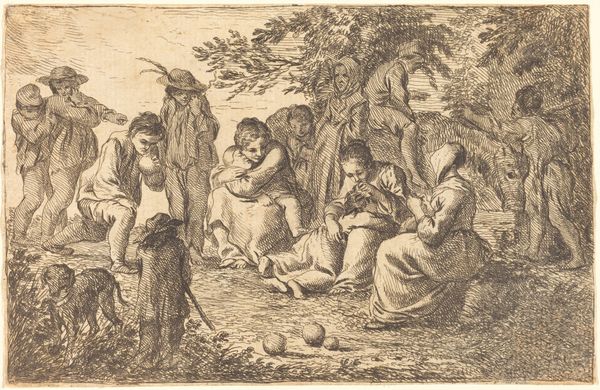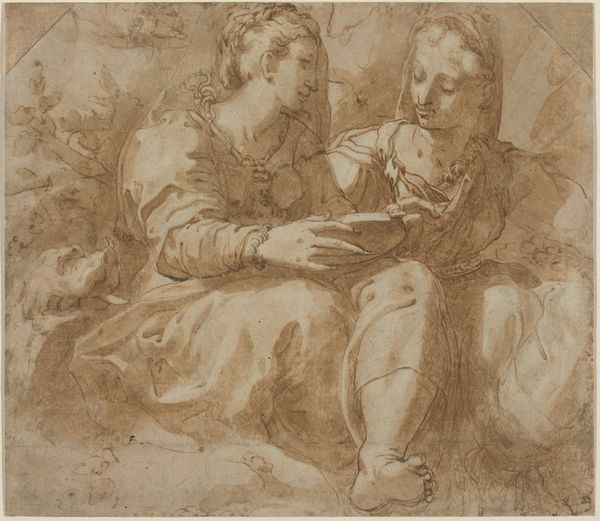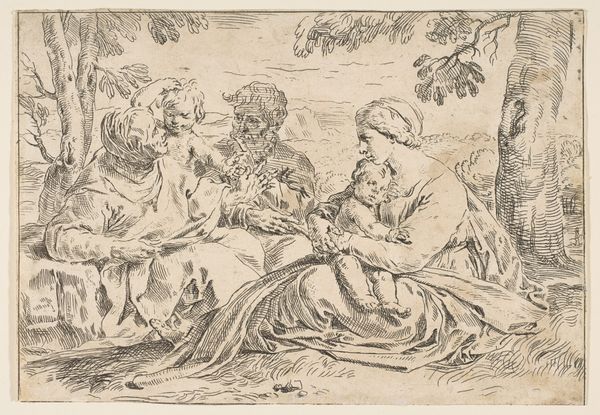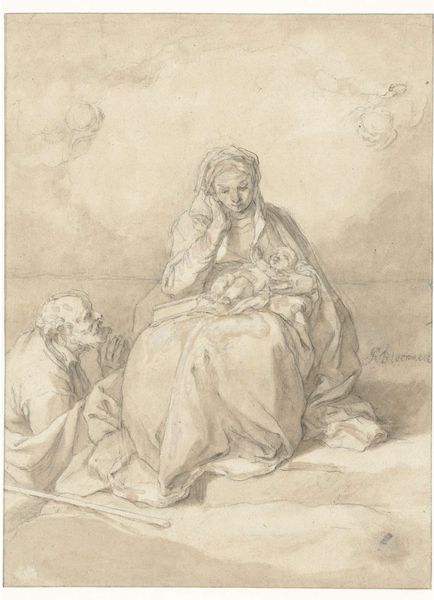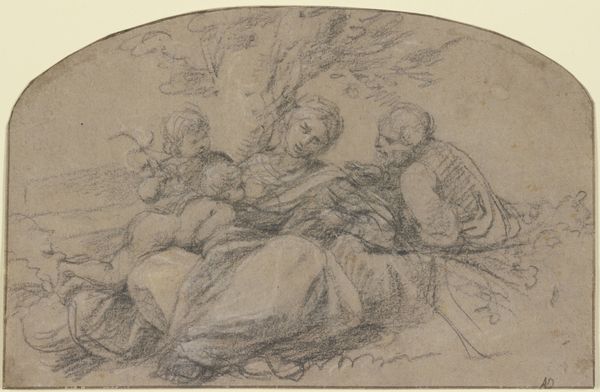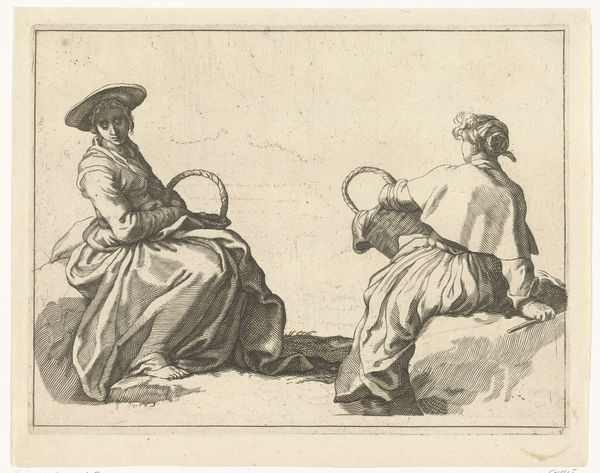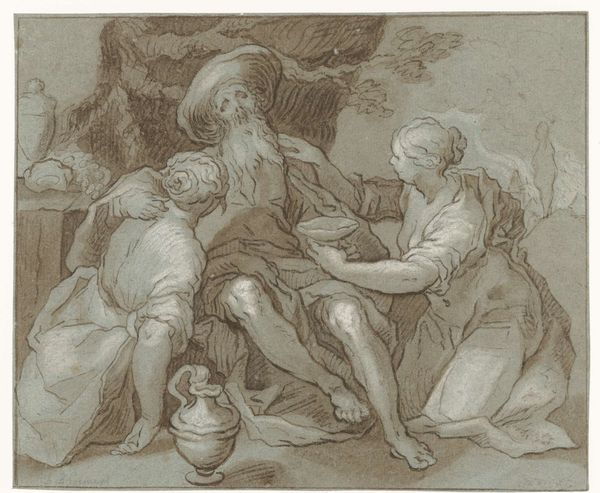
drawing, etching, ink
#
portrait
#
drawing
#
narrative-art
#
baroque
#
etching
#
figuration
#
ink
#
pencil drawing
#
ink drawing experimentation
#
pen-ink sketch
Dimensions: height 117 mm, width 156 mm
Copyright: Rijks Museum: Open Domain
Curator: This drawing, rendered in ink, is entitled "Maria met Christuskind en Johannes de Doper", placing it squarely in the rich tradition of religious figuration. The artist is Jan Miel, who created it sometime between 1633 and 1664. Editor: My first impression is one of soft intimacy despite the relative hardness of the line work. The way the figures cluster together suggests familial warmth, although the overall grayscale gives it a somewhat somber cast. Curator: That's a keen observation. Miel uses line and shadow to generate a very compelling composition that centralizes this closeness through the pyramidal structure that contains the Virgin Mary with Christ and John the Baptist, directing our vision towards that bond. We are prompted by Miel to find the symbolism of family central to our understanding. Editor: I would agree with your assessment about how the organization focuses the gaze, and it’s clear this piece is an etching or perhaps a drawing that meant to invoke the feeling of etchings which were being reproduced as print media. The choice of medium likely had an enormous effect on the distribution of the theme, don’t you think? Curator: Undoubtedly. Printmaking techniques, especially etchings in the Baroque period, facilitated the broad circulation of religious and allegorical themes like the Holy Family that we see here. Miel would have been engaging with a popular market to create his art and the scale would enable such circulation. Editor: Furthermore, it is crucial to think about who that market was at the time and to consider how their tastes might influence Miel’s design. Were these common scenes intended for wealthy elites, religious scholars, or to inspire laypersons who may only be encountering visual art for its instructive functions? Curator: Excellent point. Considering the intersection of stylistic and sociopolitical contexts allows us to form a richer appreciation of Jan Miel's piece. The dialogue of form and history shapes how we connect with "Maria met Christuskind en Johannes de Doper," adding new perspective as we look at religious drawing from the Baroque period. Editor: Precisely. Understanding art means examining the conditions of both its making and reception. Let us move on.
Comments
No comments
Be the first to comment and join the conversation on the ultimate creative platform.
